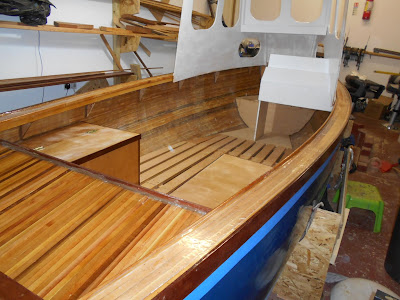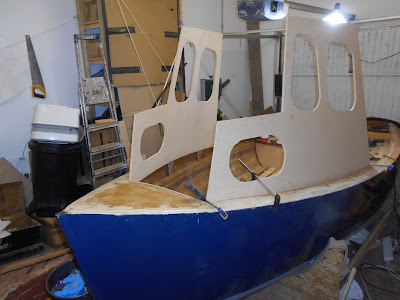I gave the wooden blanks a three coats of white paint and then fitted the ports.
I found it easy to work with and clean to the hands as long as you keep it 'flat' and don't let it fold back on itself .
I placed the tape flat along the ports, covering the flanges (with the screw holes)
I similarly covered the outside flanges (above)
Next the ports were fitted and screwed internally (above) so that the edge protruded through to the outside of the cuddy (below)
The outside flanges, already primed with sealant tape (below) was placed over the protruding edges.
The outside flange was then screwed in place (above)
Meanwhile .... a Happy And Healthy 2020 to everyone
(Ignore the forward port, I just placed it there for the photo, rather than leave a hole)





















































